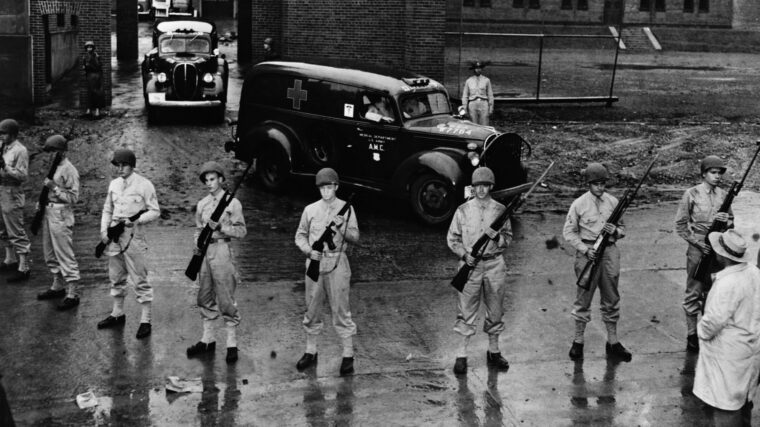
J. Edgar Hoover
WWII Spies: Double Agent Dusko Popov, a.k.a. ‘Tricycle’
By Peter KrossOn March 18, 1941, an accident took place in the crowded streets of New York’s Times Square. Normally an accident like this would not make news. Read more

J. Edgar Hoover
On March 18, 1941, an accident took place in the crowded streets of New York’s Times Square. Normally an accident like this would not make news. Read more

J. Edgar Hoover
Throughout his lifetime, FBI Director J. Edgar Hoover always boasted that no enemy agent, either spy or saboteur, ever operated at large in the United States during World War II. Read more

J. Edgar Hoover
Shortly before Pearl Harbor, an attractive Danish journalist arrived in the United States to pursue a writing career. Read more

J. Edgar Hoover
New Mexico and its capital of Santa Fe bring to mind some beautiful images. Stunning sunsets, unlimited vistas, a plethora of art galleries, the spectacular food enlivened with the local green chile, an ancient Native American culture that still thrives, and a Spanish heritage tradition going back to within 50 years of Columbus’s arrival all make for a unique cultural and physical environment. Read more

J. Edgar Hoover
On March 14, 1988, a solemn ceremony took place at Arlington National Cemetery. Resplendent in their white caps and dress blues, the Marine body bearers laid to rest the ashes of Ernest Cuneo in the Columbarium with full military honors. Read more

J. Edgar Hoover
“We were stunned when we entered the camp,” Yoshio “Yosh” Nakamura said, remembering the day when he and his family, from El Monte, California, were herded through the main gate at the Gila River Relocation Center—a Japanese American internment camp 30 miles southeast of Phoenix, Arizona—carrying only suitcases into which their worldly possessions had been crammed. Read more

J. Edgar Hoover
In 1939, Joseph P. Kennedy, the scion of the modern-day Kennedy family which included three United States senators, an attorney general, and the 35th president of the United States, was appointed the American ambassador to Great Britain by President Franklin D. Read more

J. Edgar Hoover
On July 14, 1940, William Donovan stood on the pier fronting New York harbor and waited to board the Pan Am flying boat named the Lisbon Clipper for a flight that would take him to Portugal and then to London, his ultimate destination. Read more

J. Edgar Hoover
On February 1, 1943, a group called the U.S. Army Signal Intelligence Service, the forerunner of the modern-day National Security Agency (NSA), began a project to intercept and analyze diplomatic signal traffic sent by an ally of the United States: the Soviet Union. Read more

J. Edgar Hoover
Buried in the October 24, 1944, edition of the New York times was the headline: “German Ex-Officer Held as Nazi Spy: Captain in Kaiser’s Army, 62 and Foster Daughter Accused of Sending Ship Data Before U.S. Read more

J. Edgar Hoover
The U-boat landings of German spies off the coast of Long Island during Operation Pastorius were not the only instances of U-boats putting German agents ashore on the Atlantic coast of the United States. Read more

J. Edgar Hoover
It was just about midnight on June 12, 1942, and the Abwehr (Nazi Germany’s intelligence agency) hoped that Dasch and his three men, along with another four-man group to be put ashore on the coast of Florida, would be able to destroy factories of the Aluminium Company of America (ALCOA) located in the United States. Read more